This article is part of The Poynter 50, a series reflecting on 50 moments and people that shaped journalism over the past half-century — and continue to influence its future. As Poynter celebrates its 50th anniversary, we examine how the media landscape has evolved and what it means for the next era of news.
In January 1998, Newsweek had the story of a lifetime.
White House intern Monica Lewinsky and President Bill Clinton had begun a secret sexual relationship in 1995, when Lewinsky was 22. After being transferred to the Pentagon the following year, she confided in a coworker, Linda Tripp, who secretly recorded some of their conversations. In 1998, Tripp handed those tapes to independent counsel Kenneth Starr, who was already investigating unrelated business dealings of the Clintons. With Tripp’s information, Starr began probing the affair — the latest in a long line of affairs and accusations against Clinton, many from his time as governor of Arkansas.
And Newsweek had the goods.
“We had the story — no one else did,” recalls Michael Isikoff, an investigative reporter then with Newsweek. “And the Newsweek editors balked about publishing it.”
Then, on Jan. 17, 1998, something seismic happened.
Matt Drudge, a political gossip blogger known for his anti-Clinton scoops and a fast-growing email list, broke the story himself. He reported that Newsweek was sitting on explosive allegations about Clinton and an intern. Just like that, a rumor bouncing around D.C. newsrooms became a global story.
Drudge didn’t have the full story. But that didn’t matter.
He hit publish, and editors everywhere had a decision to make: Ignore the rumor and risk irrelevance, or chase it and risk their standards. Suddenly, the rumor itself became the story.
The rest of the media jumped in, and within days, the affair allegations, and the legal fallout, dominated headlines. At a Jan. 26 press conference, Clinton famously — and falsely — said, “I did not have sexual relations with that woman, Miss Lewinsky.” By July, Lewinsky had accepted immunity to testify before a grand jury, where she confirmed the relationship.
Eventually, Starr produced a report that led the House of Representatives to approve two articles of impeachment. But the Senate declined to convict him, and Clinton remained in office.
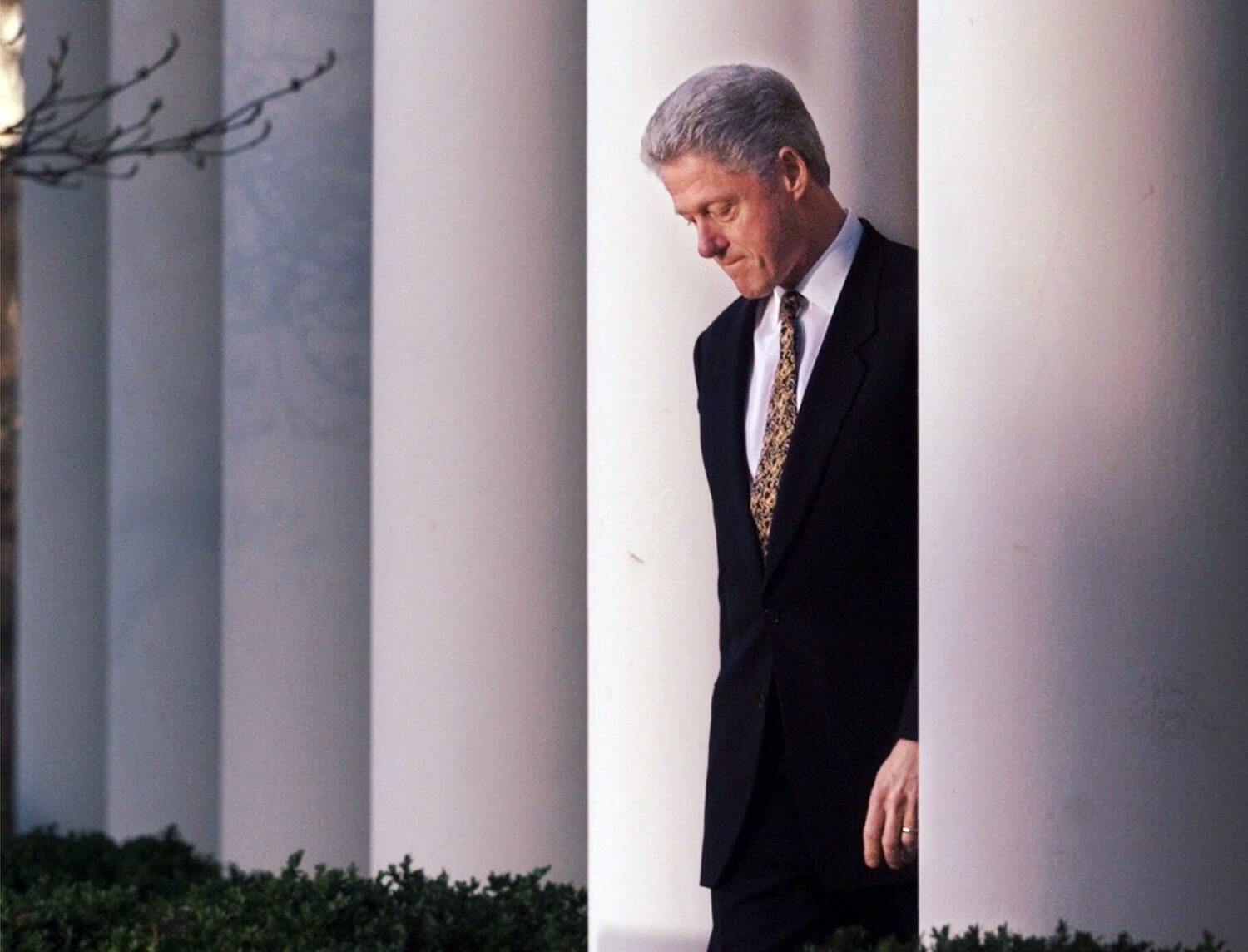
President Clinton walks to the podium to deliver a short statement on the impeachment inquiry in the Rose Garden of the White House in Washington Friday, Dec. 11, 1998. (AP Photo/J. Scott Applewhite)
The media, and the country, were consumed. But less obvious at the time was what Drudge had changed. By scooping Newsweek, he shattered the old gatekeeping model. He proved that rumor, gossip and partial information could drive the news cycle if the story was salacious enough. It opened the door to “it’s out there” journalism, where the existence of a rumor could become the story itself.
Ken Gormley, author of the book “The Death of American Virtue, Clinton vs. Starr” and the president of Duquesne University, says the scandal “upended” the traditional rules governing American media. “Suddenly, cable news, print media and the emerging forms of media on the internet threw past journalistic protocols to the wind in the race to cover this explosive story as it unfolded — literally, by the minute.”
The Washington press corps launched into a feeding frenzy. Newsrooms that once turned up their nose at gossip found themselves chasing it. Scott Orr, a Washington, D.C., correspondent for the Star-Ledger of Newark, rigged a $75 camera to his computer to livestream the doorway of Lewinsky’s lawyers. “Monica-cam” garnered as many as 60,000 visitors a day — not bad for a primitive website at the dawn of the internet era that didn’t bother to market itself.
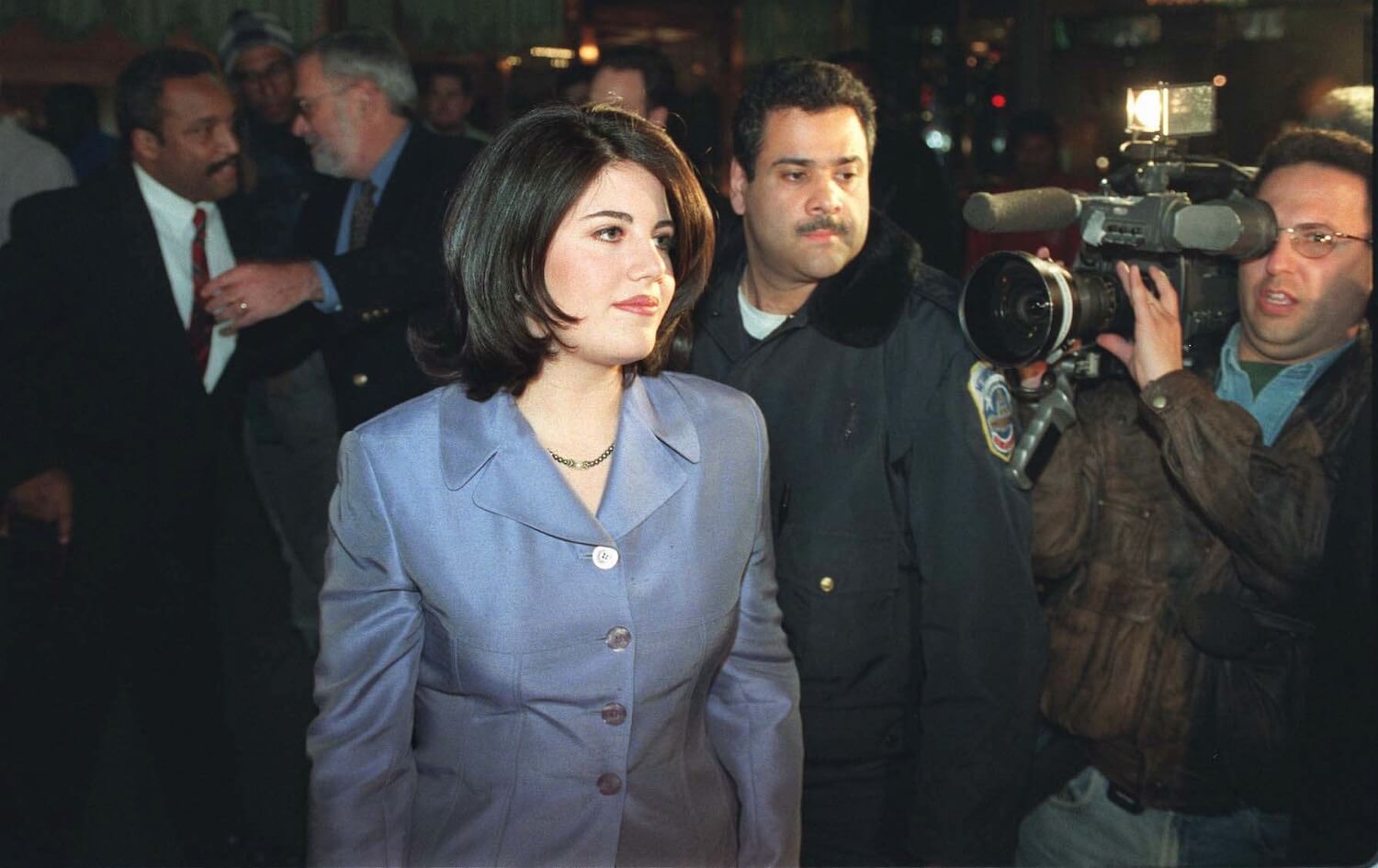
Monica Lewinsky walks past a television cameraman with her attorneys as they leave a Washington restaurant Saturday night, Feb. 21, 1998. (AP Photo/Charles Rex Arbogast)
Even National Journal, a studious policy magazine known for its starched-shirt approach to journalism, got in on it. As a cub reporter there, I was suddenly covering a “document dump” in the House press gallery, furiously flipping through several-inch-thick stacks of photocopies that detailed the sometimes explicit accounts from Clinton confidants.
Drudge had lit the match. Traditional media poured on the gasoline.
Of course, Matt Drudge wasn’t the first to peddle gossip. But he was the first to make it national news by publishing it online, fast and unfiltered — and beating legacy media to the punch.
“This was the first time a story broke in Drudge and migrated to the mainstream,” said Mike McCurry, the White House press secretary when the scandal broke.
McCurry recalled facing White House reporters in a gaggle the day after Drudge broke the story and acting “indignant” towards Ann Compton of ABC News for even asking about such a report.
Drudge’s scoop — even if based on rumor — was too big to ignore. Newsrooms had to follow.
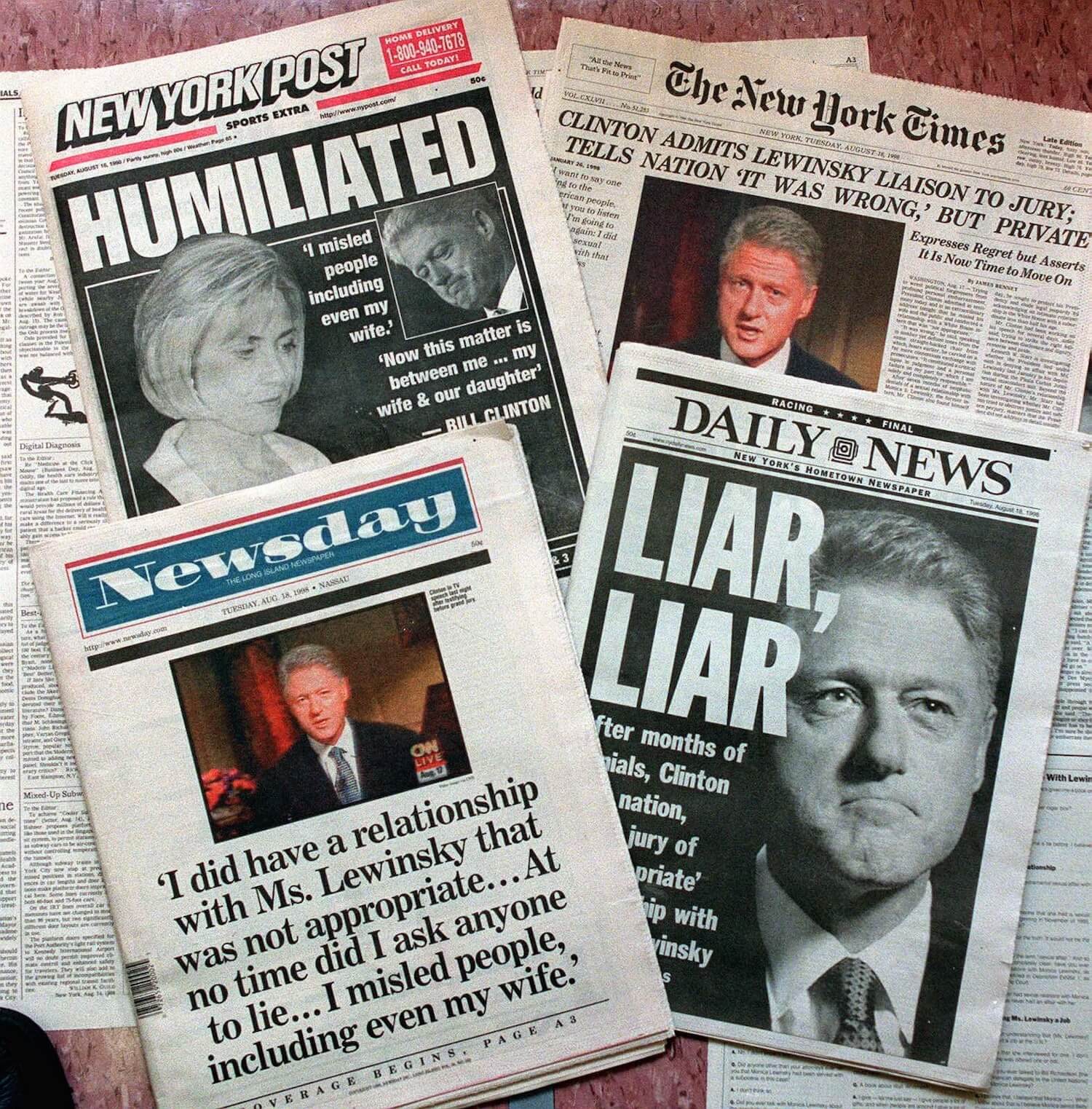
A selection of New York City’s newspapers show headlines on President Clinton’s testimony on the Monica Lewinsky affair in New York Tuesday, Aug. 18, 1998. (AP Photo/Marty Lederhandler)
If Matt Drudge had not existed, the story that unfurled would have hit much more slowly and weakly, said Chris Moody, the writer and host of the 2024 podcast “Finding Matt Drudge” and a lecturer in journalism at Appalachian State University.
“He really added an intensity to the story that lit a fire under many reporters’ chairs,” Moody says.
Drudge was a savvy digital journalist. He knew the value of “close enough.” A presidential sex scandal didn’t need airtight sourcing. It just needed plausibility. That instinct became a feature of the new digital order that Drudge ushered in: Drudge wasn’t quoting sources. He was becoming one.
If Watergate gave rise to a “two-sources” standard, the Clinton-Lewinsky scandal forced a new standard; one that felt more like story laundering. Drudge had posted it. The story was moving. Within days, cable news was speculating, newspapers were scrambling, and the rumor became the narrative. Not publishing started to feel like professional malpractice.
Peter Baker, then of The Washington Post, and two other Post reporters published the first mainstream media account of the affair. Newsweek rushed to get its delayed version on the internet — the first time the magazine had ever broken a story online, rather than in print.
Until the scandal, the Post website “was a platform to showcase our once-a-day product,” Baker says. Publishing something first online “was a revolution for us in how we thought of our news coverage.”
The floodgates opened. Starr turned his report over to Congress in print, but also in an electronic form that could be uploaded online. The Post’s coverage, Baker said, offered links to original documents from lawsuits, investigations and congressional testimony that would have been impractical to include in the printed version of the newspaper.
“College and high school students huddled in libraries and cubicles around the country poring over the sexually explicit, tawdry details, digesting the shocking news in real time without the ordinary legal or journalistic filters that would have regulated how, when and in what form such information reached the public,” Gormley said.
The Clinton-Lewinsky scandal launched Drudge’s website into the media stratosphere, Moody says. Covering a presidential scandal “put him in the minds of an entirely new class of media” in Washington and New York, Moody says. He’s still around today (albeit with a website design that still parties like it’s 1998), and he still makes lists of influential media properties. He gets 7 billion visits a year.
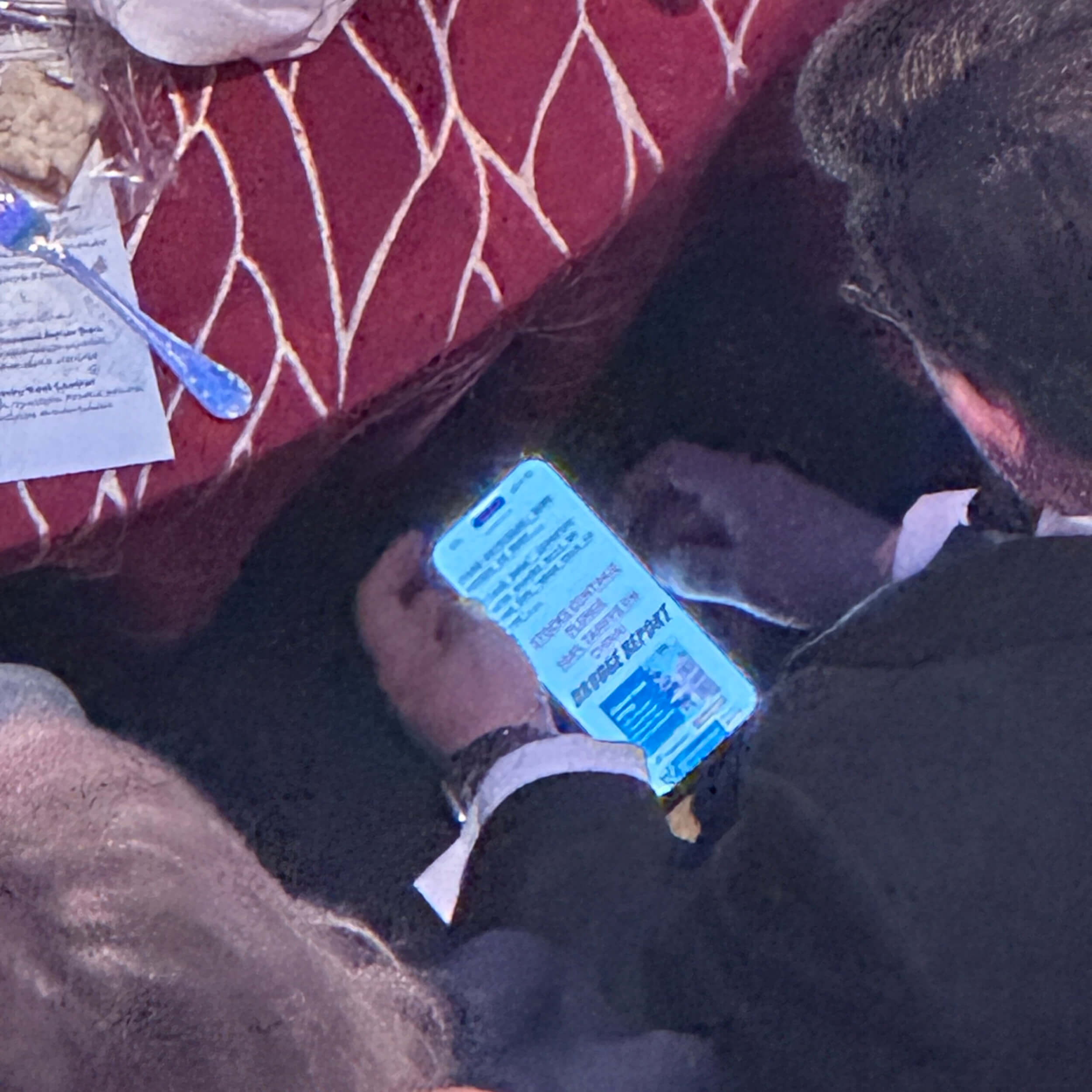
Mike Johnson reads the Drudge Report at 8:35 p.m. Eastern time on Wednesday, April 9, 2025, as President Donald Trump speaks a few yards away. (Jasmine Wright/NOTUS)
Drudge is famously reclusive; we reached out to him via his longstanding email address but did not hear back.
The volume, the speed and the stakes of the post-Drudge journalism world made it nearly impossible to verify every fact, even as the coverage barreled ahead. Legacy outlets risked looking timid if they held back. And if they pushed forward, they risked repeating inaccuracies. The story was too big to ignore and too unstable to cover responsibly in real time. Truth was sacrificed to speed. Rumor became currency.
“The culture was ready for it,” Moody says. “People were hungry for information.”
The idea that a single post could shape national coverage — and bypass traditional vetting — would become foundational to the internet era, from political blogs to Twitter to Substack.
And journalism was never the same.






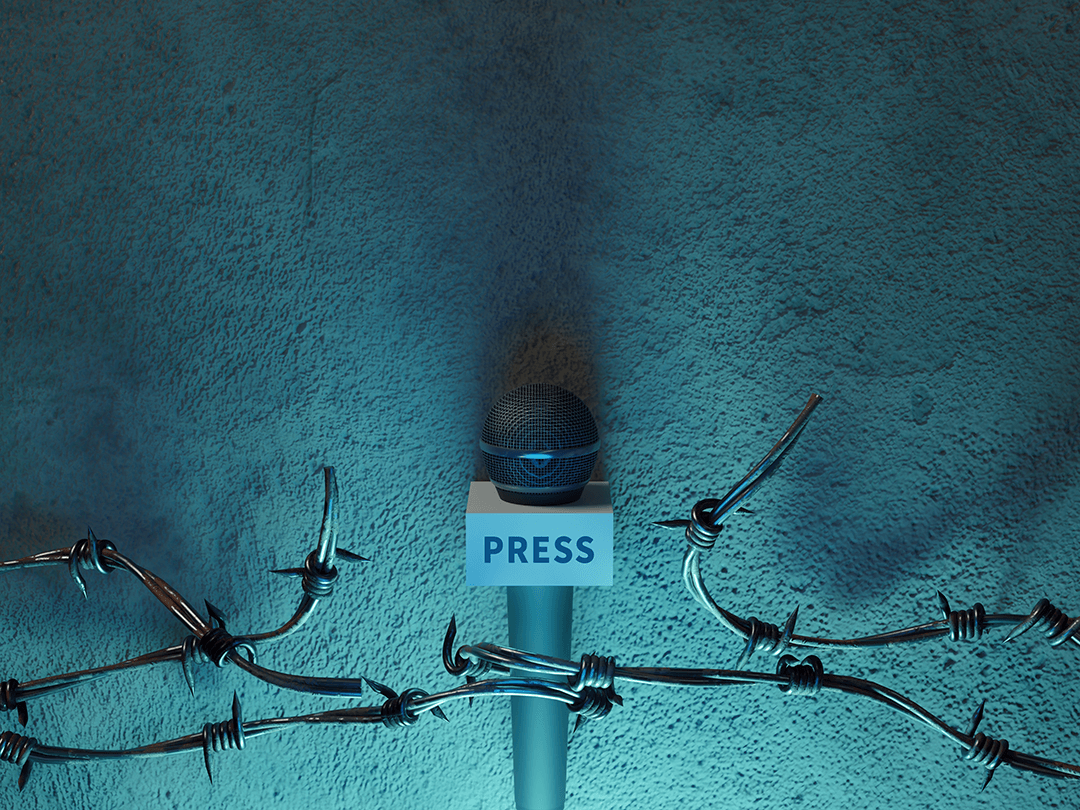


Comments